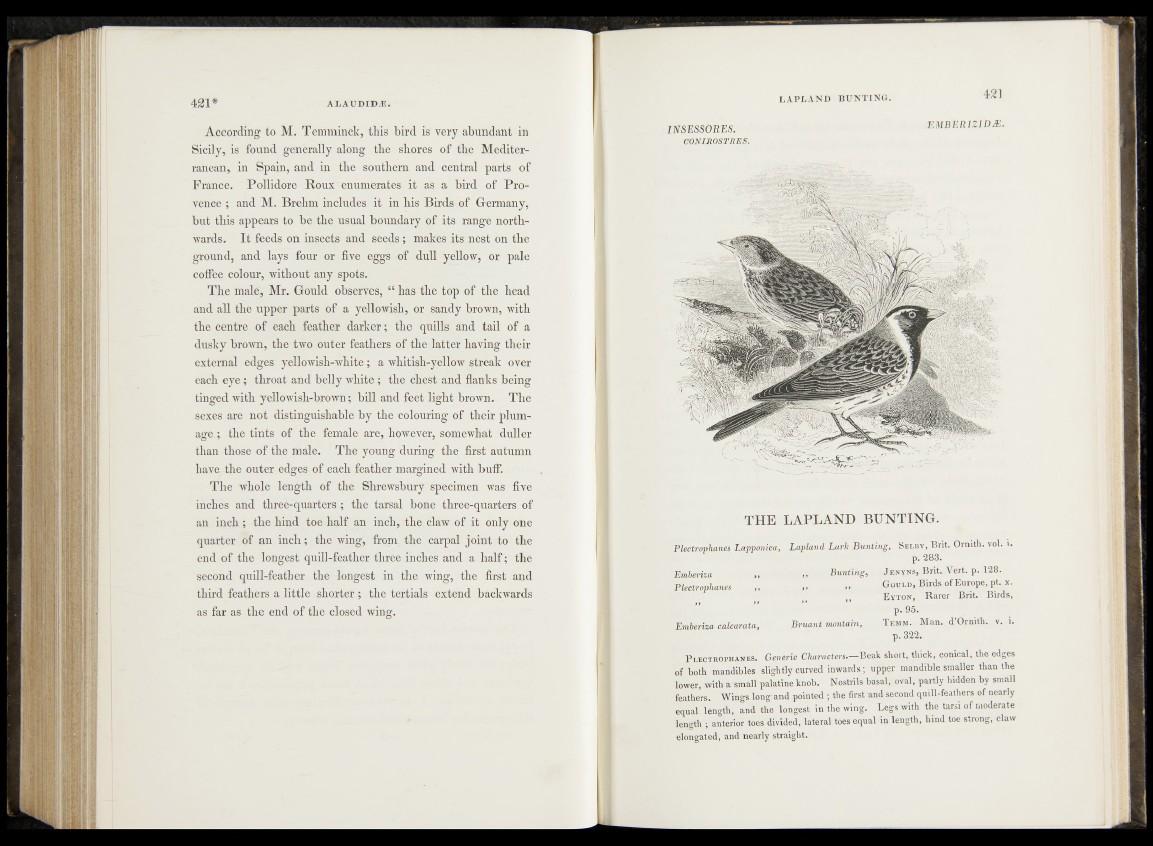
According to M. Temminck, this bird is very abundant in
Sicily, is found generally along the shores of the Mediterranean,
in Spain, and in the southern and central parts of
France. Pollidore Roux enumerates it as a bird of Provence
; and M. Brehm includes it in his Birds of Germany,
but this appears to be the usual boundary of its range northwards.
I t feeds on insects and seeds ; makes its nest on the
ground, and lays four or five eggs of dull yellow, or pale
coffee colour, without any spots.
The male, Mr. Gould observes, “ has the top of the head
and all the upper parts of a yellowish, or sandy brown, with
the centre of each feather darker; the quills and tail of a
dusky brown, the two outer feathers of the latter having their
external edges yellowish-white; a whitish-yellow streak over
each eye; throat and belly white; the chest and flanks being
tinged with yellowish-brown; bill and feet light brown. The
sexes are not distinguishable by the colouring of their plumage
; the tints of the female are, however, somewhat duller
than those of the male. The young during the first autumn
have the outer edges of each feather margined with buff.
The whole length of the Shrewsbury specimen was five
inches and three-quarters ; the tarsal bone three-quarters of
an inch ; the hind toe half an inch, the claw of it only one
quarter of an inch; the wing, from the carpal joint to the
end of the longest quill-feather three inches and a half; the
second quill-feather the longest in the wing, the first and
third feathers a little shorter ; the tertials extend backwards
as far as the end of the closed wing.
INSESSÖRES. EMBERIZIDJE.
CONIROSTRES.
TH E LAPLAND BUNTING.
Plectrophanes Lapponica, Lapland Lark Bunting, S elby, Bnt. Ornith. vol. i.
p. 283.
Emberiza ,, ,, Bunting,
I ' -----
J enyns, Brit. Vert. p. 128.
Plectrophanes ,, ,, „ G ould, Birds of Europe, pt. x.
>> E yton, Rarer Brit. Birds,
p. 95.
Emberiza calcarata, Bruant montain, T emm. Man. d’Ornith. v. i.
p. 322.
P lectrophanes. Generic Characters.— Beak short, thick, conical, the edges
of both mandibles slightly curved inwards; upper mandible smaller than the
lower, with a small palatine knob. Nostrils basal, oval, partly hidden by small
feathers. Wings long-and pointed ; the first and second quill-feathers of nearly
equal length, and the longest in the wing. Legs with the tarsi of moderate
length ; anterior toes divided, lateral toes equal in length, hind toe strong, claw
elongated, and nearly straight.